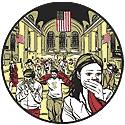
Smallpox Attack
What the city would do: Set up 200 public vaccination centers as soon as the first New York case is diagnosed. Speed is key—smallpox has an invisible seven-to-fourteen-day incubation period during which the saliva-born virus can spread like gossip.
Worst-case scenario: Health workers flee—a recent study suggested that half would stay away during an outbreak. The disease spreads so fast that public health officials can’t keep up. The virus kills one-third of people who get it, but a vaccine administered within three days of exposure can lessen symptoms. (The U.S. has 300 million doses stockpiled.)
What you can do: Be first on line for a shot, except if you’re immuno-suppressed, pregnant, or afflicted by various skin conditions—then it’s not recommended unless you’ve already been exposed. Stay home and away from any and all people who’ve been outside. If you must go out, wear a biohazard mask and wash with soap and water before coming in contact with your home.

Chlorine Release
What the city would do: If terrorists hit the Kuehne Chemical Co. chlorine-manufacturing plant in Kearny, New Jersey—directly under the Pulaski Skyway and considered one of the country’s most vulnerable targets—the city’s top priority would be figuring out how fast it would take the greenish-yellow gaseous cloud to get here. (Midtown’s only thirteen miles away.) Those downwind would be ordered to stay indoors with windows closed. Nonetheless, Feds estimate that at least 10 percent of nearby residents will try to flee anyway, risking exposure to the toxic gas and skin burns, lung collapse, and, eventually, death.
Worst-case scenario: A northeastern wind blows the noxious cloud directly over the city. Millions could be sickened or killed.
What you can do: Get inside as fast as possible, close windows, turn off ventilation systems, and seal windows and doors with duct tape. Stay inside and don’t leave unless told by emergency personnel to do so. Going outside could be deadly.
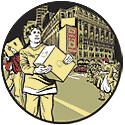
Blackout
What the city would do: Dispatch cops, MTA workers, and fire personnel to rescue trapped subway riders, and tell everyone else to head home by foot as buses crawl through streets jammed by nonworking traffic lights. Fires started by candles would erupt throughout the city. If the blackout lasted more than a few days, hospitals would be forced to ration electricity.
Worst-case scenario: It hits in the heat of summer and lasts more than a few days. Fuel supplies and delivery systems would be strained. Heat exhaustion would overwhelm the homebound elderly, and the city economy could lose billions.
What you can do: Keep flashlights, batteries, and an emergency blanket handy. Buy a hand-crank radio and a battery-powered cell-phone charger. Have plenty of water on hand. (Generators can’t be operated inside or outside near windows, so they’re of little use to most New Yorkers.) Unplug appliances and keep freezer and refrigerator doors closed.
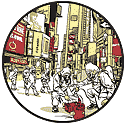
Dirty Bomb
What the city would do: Isolate the contaminated zone and order people nearby to stay inside and close their windows. Unlike a nuclear blast, a dirty bomb—a conventional explosive with radioactive material packed inside—would likely kill only a few hundred. Those in the zone but not injured would be dispatched to hospitals to hose off; everyone else is sent home to shower.
Worst-case scenario: A midday attack in Times Square destroys half a block and touches off mass hysteria, sending tens of thousands streaming into the contaminated zone and overloading emergency rooms.
What you can do: Stay or get inside until you’re told to leave the area. Once you’re in a hospital or at home, remove clothing outside, seal it in a plastic bag, and wash with soap and water; that removes up to 90 percent of the radioactive material, which is relatively weak in a dirty bomb. The other 10 percent could cause mild and temporary radiation sickness but would dissipate after a week or two. If you’re not hurt in the initial blast, you’re probably okay, but you can get a radiation scan at a hospital.
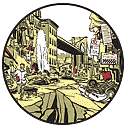
Earthquake
What the city would do: Dig survivors out of crumbled tenements and town houses and race to extinguish blazes fueled by broken gas lines. A minimum 5 on the Richter scale would level homes all over the five boroughs, and more deaths would result later as destabilized buildings are toppled by aftershocks and pedestrians are pummeled by falling air conditioners and other debris. Though two major fault patterns run under Manhattan, experts say a big quake is unlikely.
Worst-case scenario: A high-magnitude earthquake with an epicenter within the five boroughs. Aboveground subway lines and bridges crack, and airports are disabled.
What you can do: Live in a steel-framed high-rise built after seismic codes were adopted in 1996. At the first tremor, grab a cell phone and take cover in a doorway or under a solid piece of furniture. Protect your head. If you can, turn off natural gas, water,and electricity, but beware of aftershocks. Cover your nose and mouth with clothing to avoid breathing toxic dust.

Indian Point Explosion
What the city would do: Hope that winds are headed north, as the 35 miles between the nuclear-power plant and midtown is a short commute southward for a radioactive plume, which could kill thousands in a few days, cause radiation sickness and eventual cancer for tens of thousands more, and taint the city’s water supply.
Worst-case scenario: The city could be uninhabitable for years.
What you can do: Hoard water and canned food and make sure you have at least a 30-day supply of prescriptions. Stock up on potassium iodide tablets—taking them within hours of exposure can help protect children and pregnant women who have growing thyroids that absorb radiation. In the event of a terrorist attack or other mishap, get inside, remove clothing, close fireplace dampers, and shut off all ventilation and heat systems. Get to an interior room, seal it off, and stay put with the radio on.
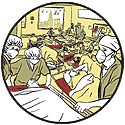
Avian-Flu Pandemic
What the city would do: Isolate suspected patients and set up flu-shot centers to deliver any available vaccinations, the first going to health workers and their families, the elderly, and young children. Schools would likely close in a pandemic, and large public gatherings like sports events and concerts could be canceled.
Worst-case scenario: Though only 2 percent of avian-flu patients die, hospitals are overwhelmed by up to 200,000 patients over a six-month period. People across the city stop leaving their homes out of fear.
What you can do: Wash your hands often and wear a disposable surgical mask. If you can get enough of it, take Tamiflu every day until the outbreak is over—while it might not protect you, it can’t hurt. Stay away from crowded spaces, like subways and buses. Don’t handle pay phones, railings, or door handles and don’t touch your mouth or eyes afterward if you do. Don’t kiss any Chinese chickens.
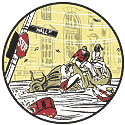
Hurricane
What the city would do: Issue evacuation orders 48 hours before the storm hits, urging people in vulnerable zones (see map) to flee those areas by public transportation or catch an MTA bus to Madison Square Garden or one of 22 other intake centers.
Worst-case scenario: A storm closes in on the city faster than expected. Evacuees are stuck in cars on closed roads; the subways and Hudson River tunnels flood. Though a death toll would likely be low, damage could be extensive.
What you can do: Keep three days’ worth of food, water, diapers, medication, and other supplies in a safe place. If you’re in a hurricane zone, buy flood insurance and snap photos of your house for future reference. Keep a prescription stash handy and pack a bag with copies of important documents, extra keys, rain gear and shoes, nonperishable foods, and at least $100.
As the storm approaches, nail plywood over windows and bring balcony furniture and garbage cans inside. If you’re evacuating, unplug appliances, turn off pilot lights and water, and put valuables you can’t take along in watertight containers. Fill your tank, grab a map, and get out of town—with your pets.
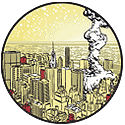
Nuclear Bomb
What the city would do: Pray for help from the Feds because city hospitals, police precincts, and firehouses could be destroyed. If the prospect of a fema-managed catastrophe isn’t scary enough, a nuclear bomb would kill millions, and the lucky ones would get vaporized instantly. Others would be burned, blinded, or poisoned by radiation sickness in subsequent weeks and months. Bodies would litter the streets, and the water supply would be contaminated. The city would be too radioactive for outside emergency workers to enter, so those left alive would have to improvise.
Worst-case scenario: A bomb in the center of midtown. It doesn’t get worse than this.
What you can do: You could try to get your hands on some potassium iodide tablets in case you survive. Or, you might consider investing $200,000 in a “safe room”—a sealed, gamma-radiation-proof space with positive pressure, oxygen, food, necessary medicine, and other supplies—preferably underground. If you’re in a tall building, there’s no harm in heading for the center of the middle floors, which will put more mass between you and the radiation outside. But really: Kiss your ass good-bye.
See also
Remain Calm
The strategies and tactics of survival.
Bird Watching
How New Yorkers are coping with the Avian flu scare.
Geography of Disaster
The City’s fault lines, flood zones, escape routes, and trauma centers.